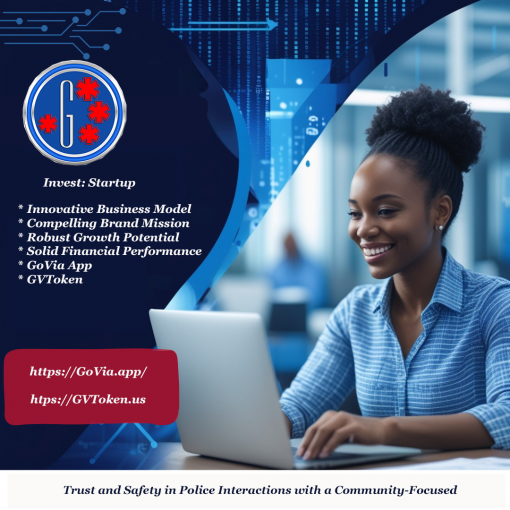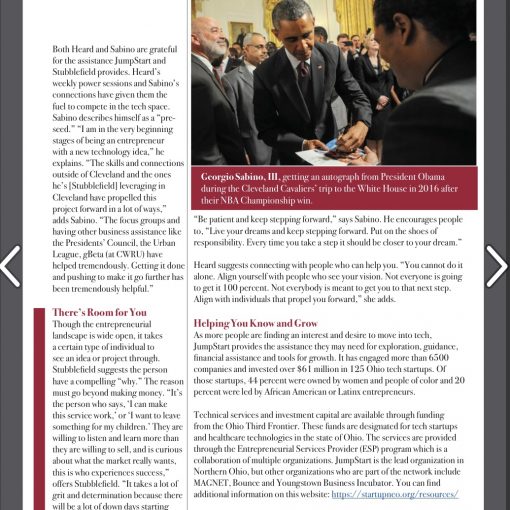
By Christopher Yoshito
In an era when trust between communities and law-enforcement is frayed, when civil-rights concerns, mental-health crises, and policing oversight converge in tragic intersections, the need for a new kind of tool is clear. Enter GoVia: Highlight A Hero — a community-police safety app positioned not just as a camera in your pocket, but as a networked shield linking citizens, attorneys, mental-health professionals, families and community advocates with the goal of safe, accountable encounters.
Below I deeply explore its vision, architecture, service model, and why it matters — especially for African-American and Latino communities where the stakes of mis-encounters remain disproportionately high.
1. The Vision: Beyond “Record the Cop”
Many apps focus on recording police encounters or broadcasting incidents. But GoVia is intentionally broader — more holistic. According to its website, it aims to prevent civil-rights abuses, provide due-process access for anyone “unjustly detained or stopped by law-enforcement,” and at the same time improve police performance via transparency and shared accountability.
That framing matters. It shifts from a purely adversarial “us vs them” dynamic into a model of networked support: the citizen is not alone, the officer is not unmonitored, everyone is part of a system of checks and balances.
2. What GoVia Actually Does: Service Components
From available documentation, here are the core service components:
- Real-time access to attorneys, mental‐health clinicians, family/community supporters during police/citizen encounters. The app positions itself as a live link to legal, medical and family networks.
- Affidavit/documentation tools, video evidence capture, secure storage and encryption (cybersecurity backbone) to enable claims of rights violation to be supported.
- “Highlight a Hero” algorithm/social feed: users can rank and highlight positive interactions (not only negative ones), promoting a culture of recognition and accountability, rather than purely critique.
- Community-network integration: linking family, civil advocates, community organizations, legal and mental-health services in a single ecosystem so that an encounter doesn’t become isolated trauma but rather part of a communal response. This is explicitly part of the messaging.
- Global reach, scaling ambition: The site notes uptake in the U.S. and internationally (Tanzania, India, Vietnam, U.K., Hong Kong) — though deeply localised implementation remains critical.
3. Why this matters — especially for marginalized communities
- The disproportionate risk of rights violations, wrongful stops, excessive force — especially for African-American and Latino communities — remains documented in many reports. A service like GoVia offers a structural response, not just individual vigilance.
- The networked access to attorneys/mental-health means that the typical “you are alone in the car when the officers show up” moment can instead become “you have a support system engaged.”
- By integrating recognition of positive encounters, the app attempts to rebalance a narrative that too often is purely about conflict — fostering trust, not just oversight.
- The model acknowledges that policing is part of a larger ecosystem (law, health, family, community). That ideological framing matters if one is serious about systemic reform, not only reactive documentation.
4. Critical Considerations and Counter-points
As rigorous practitioners (as you expect) we must interrogate this with a critical lens:
- Data & privacy risks: Capturing video, affidavits, legal/medical information means heightened risk of misuse, hacking, or unintended exposure. The app’s blog claims advanced encryption and AI-driven protections. But real-world audits, transparency of data governance, independent review and community trust will determine whether those claims hold up.
- Power dynamics: Technology alone rarely shifts structural power. Community members may still feel under threat in the moment of a stop. An app can add tools, but cannot alone eliminate discretion, bias or trauma. The risk: assuming the app is a “magic bullet” rather than part of a larger strategy (legal reform, training, community investment).
- Adoption & equity: The app’s model hinges on users having real-time access to attorneys/mental-health supports. But communities most at risk often face barriers (trust, cost, tech access, digital literacy). Ensuring equity of access is essential.
- Police & institutional buy-in: For the model to succeed in changing encounters, police agencies must see value (not threat) and engage. If officers view the app as purely adversarial, that might reduce cooperation, or lead to stonewalling.
- Sustainability / business model: The blog notes seed/start-up costs, scaling, patents. The question: how will the service model work long-term? Will user fees, subscriptions, public-agency contracts, grants be feasible? This is critical if the app is to remain free or low cost for vulnerable users.
- Evaluation & outcomes: Ultimately, success metrics matter: fewer escalated encounters, more positive ratings, better legal outcomes, reduced liability for police. The blog offers projection but independent evaluation will be needed.
5. “Hero Narrative” for Service Outreach
Here is how you might frame GoVia in a short, shareable “hero”-cut for social media, linking into your full service landing page:
“When the lights flash, and your rights hang in the balance, GoVia becomes your digital shield. An attorney, a mental-health clinician, your community network — all live-linked. You don’t just record the moment; you transform it. Because you deserve a good encounter. #HighlightAHero”
It’s important the messaging remain affirmative (“you deserve a good encounter”) rather than only adversarial (“we’re watching the cops”). That empowers citizens, invites participation, reduces alienation.
6. Proposed Blog Structure Landing Page / Thumb Link
Here is a suggested structure for your landing-page blog that you will link from social media:
- Hero Image + Tagline — e.g., “GoVia: Your Rights • Your Network • Your Shield”
- Opening Narrative — quick story: someone stopped, alone, unexpectedly — how GoVia makes a difference.
- What the App Does — summarise bullet-points of service.
- Why It Matters — data/rationale for communities at risk + link to how the network model adds value.
- How It Works in 3 Steps — e.g., (1) Download & Set Up Network; (2) During Encounter: Activate Legal + Community Support & Start Recording/Documenting; (3) Post-Encounter: Secure Storage, Support & Follow-Up.
- Who We Are / Our Network — show attorneys, mental-health clinicians, community advocates in the network; emphasise you’re not just a camera.
- Testimonials / Early Use-Cases — whichever you have: “I felt alone when the officer showed up … but when GoVia pinged my lawyer live, I knew I had backup.”
- Call to Action / Download Link — “Get GoVia on Android / iOS — link here”.
- Social Media Buttons / Share Prompt — Encourage users to share #HighlightAHero.
- Contact / Info / Privacy & Terms Notice — reinforcing data security and user rights.
7. Link & Thumb-Tag Suggestion
For a short link you might use: go.via/app (if available) or govia.app/download.
Thumb tag could read: “GoVia – Community Police Safety App”.
Make sure the landing page includes meta-tags for social (OpenGraph) so when someone shares on Instagram, Facebook, TikTok etc, the thumbnail, title, and description appear elegantly.
GoVia’ Take
GoVia stands as a promising innovation: it bridges legal, medical, familial and community domains around the critical moment of a police encounter. If executed with fidelity, equity, and structural awareness, it has the potential to shift dynamics of power, safety and rights. But the tech is only as strong as the network and the trust built around it. For citizens — especially those most vulnerable to mis-encounters — a service like GoVia offers more than a camera. It offers a shield.
I look forward to seeing how GoVia’s rollout unfolds — participation rates, community trust, law-enforcement partnerships, measurable outcomes. If you like, I can also draft a companion one-sheet/pamphlet summarising key features and community-outreach talking-points for your legal & mental-health network partners. Would you like me to do that?




